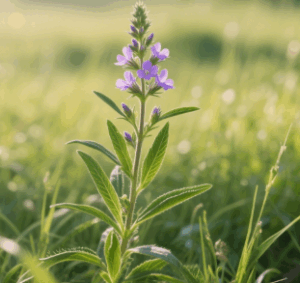In the colorful world of Chinese herbal medicine, Jatamansi has attracted attention for its unique smell and significant medicinal properties.

Jatamansi, the dried roots and rhizomes of the Jatamansi plant, was first published in the Tang Dynasty’s “Collection of Materia Medica”. The smell of jatamansi is complex, and some people with a sensitive sense of smell often classify it as an unpleasant smell, especially those who are accustomed to floral, fruity and other fragrances, and it is easier to classify it as “smelly” when they first come into contact with it.
In fact, fresh jatamansi has no peculiar smell, and only after drying can it emit a smell similar to bad sauce or foot odor. This stems from the chemical reaction during its drying process, which gives it a distinctive and pungent smell. Studies have found that the chemical composition of Jatamansi mainly includes terpenoids, flavonoids, volatile oils and coumarins. Among them, volatile oils are at the heart of the jatamansi odor, such as valerone and jatamanone. Valerone has a strong and pungent smell and is often described as a musty and medicinal smell; Jatamanone has notes of pine resin, woody and vanilla. The interweaving of these chemical components creates the unique smell of Jatamansi.
Jatamansi is warm, spicy and sweet in taste, returns to the spleen and stomach meridians, and its main effect is to regulate qi and relieve pain, open depression and awaken the spleen; External use to dispel dampness and reduce swelling. It can be used for abdominal distention, loss of appetite, vomiting; External use for the treatment of toothache, beriberi poison. For the discomfort of fullness caused by the weakness of spleen and stomach transportation and food stagnation, Jatamansi can help the spleen and stomach to restore normal qi lifting and lowering by dispersing qi stagnation, thereby relieving abdominal distension and restoring appetite. In addition, Jatamansi can also play a good role in regulating qi and relieving stomach pain caused by poor mood, liver stagnation and qi stagnation that affect the function of the spleen and stomach.
A variety of chemical components in Jatamansi give it multiple pharmacological effects. In recent years, studies have found that Jatamansi has a variety of pharmacological effects such as anti-tumor, anti-oxidant, anti-radiation, antibacterial and anti-inflammatory, regulating nerves, and regulating glucose metabolism. Ginseng Song Yangxin Capsule, Wenxin Granules, Pain Ning Tablets, Chaifeng Thogu Pills, Bezoar Antihypertensive Pills, and Blood Activating and Analgesic Creams are all contained in the common clinical preparations. In addition to traditional dosage forms such as soups, powders, and pills, Jatamansi can also be used in aromatherapy, where its aroma is inhaled to soothe the body and mind, relieve anxiety and tension.
In addition to medicinal use, Jatamansi is also often used as a spice and is widely used in perfumes, aromatherapy, sachets and other fields. The unique scent of Jatamansi can inject a different soul into perfume and aromatherapy, which can not only satisfy people’s unique olfactory experience, but also dispel daily fatigue and stress, so that the body and mind can be soothed and relaxed. Jatamansi is a classic element in the sachet formula, which is made into sachets with mugwort leaves and mint, which is not only beautiful and generous, but also has the effects of insect repellent and dampness. From ancient medical classics to modern applications, Jatamansi continues to exude charm across time and space, guarding our healthy life.
Jatamansi tea
Method: Take 2 grams of jatamansi, 3 grams of tangerine peel, and 3 grams of roses into a cup, and soak in water instead of tea.
Efficacy: Regulates qi and stomach.
Jatamansi porridge
Method: 10 grams of jatamansi, decoction of jatamansi juice for later use; Cook the porridge in an appropriate amount of japonica rice, and when the porridge is about to be made, add the sweet pine juice and boil.
Efficacy: Strengthen the spleen and stomach, relieve pain.
